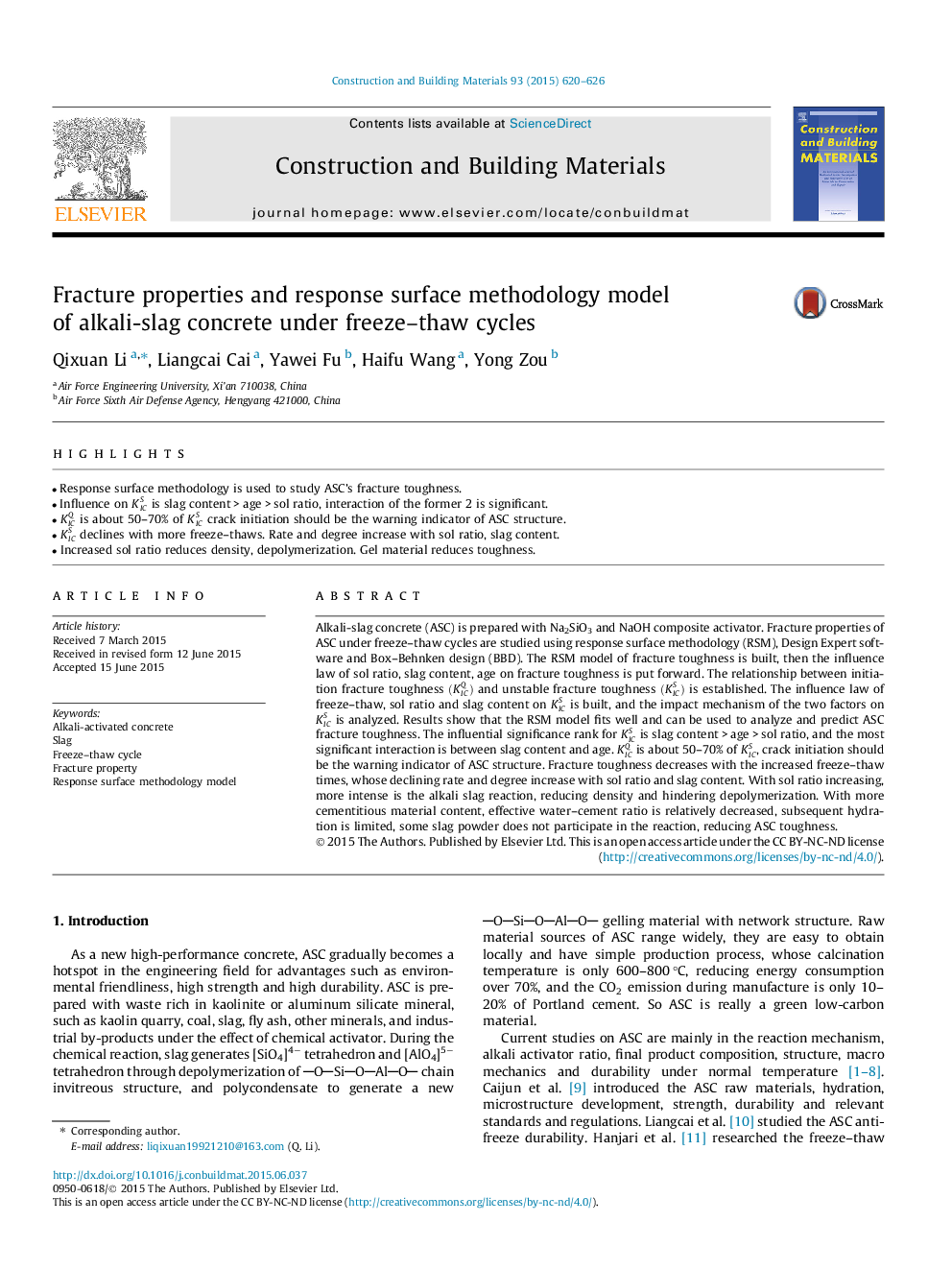| Article ID | Journal | Published Year | Pages | File Type |
|---|---|---|---|---|
| 6720613 | Construction and Building Materials | 2015 | 7 Pages |
Abstract
Alkali-slag concrete (ASC) is prepared with Na2SiO3 and NaOH composite activator. Fracture properties of ASC under freeze-thaw cycles are studied using response surface methodology (RSM), Design Expert software and Box-Behnken design (BBD). The RSM model of fracture toughness is built, then the influence law of sol ratio, slag content, age on fracture toughness is put forward. The relationship between initiation fracture toughness (KICQ) and unstable fracture toughness (KICS) is established. The influence law of freeze-thaw, sol ratio and slag content on KICS is built, and the impact mechanism of the two factors on KICS is analyzed. Results show that the RSM model fits well and can be used to analyze and predict ASC fracture toughness. The influential significance rank for KICS is slag content > age > sol ratio, and the most significant interaction is between slag content and age. KICQ is about 50-70% of KICS, crack initiation should be the warning indicator of ASC structure. Fracture toughness decreases with the increased freeze-thaw times, whose declining rate and degree increase with sol ratio and slag content. With sol ratio increasing, more intense is the alkali slag reaction, reducing density and hindering depolymerization. With more cementitious material content, effective water-cement ratio is relatively decreased, subsequent hydration is limited, some slag powder does not participate in the reaction, reducing ASC toughness.
Related Topics
Physical Sciences and Engineering
Engineering
Civil and Structural Engineering
Authors
Qixuan Li, Liangcai Cai, Yawei Fu, Haifu Wang, Yong Zou,
